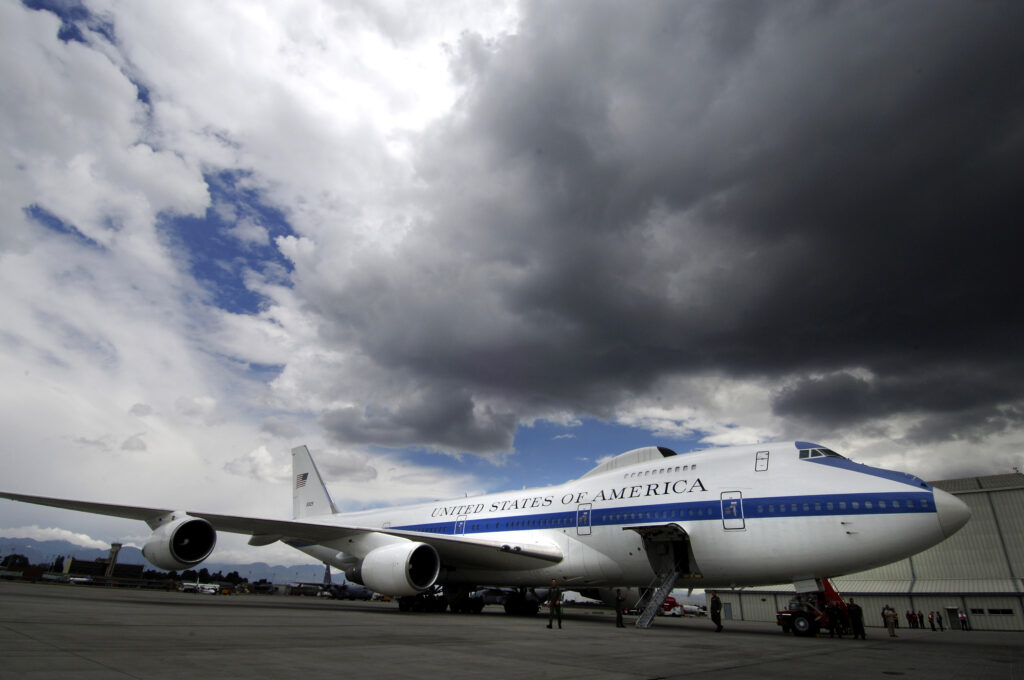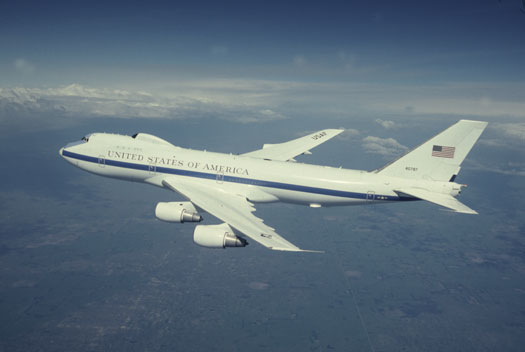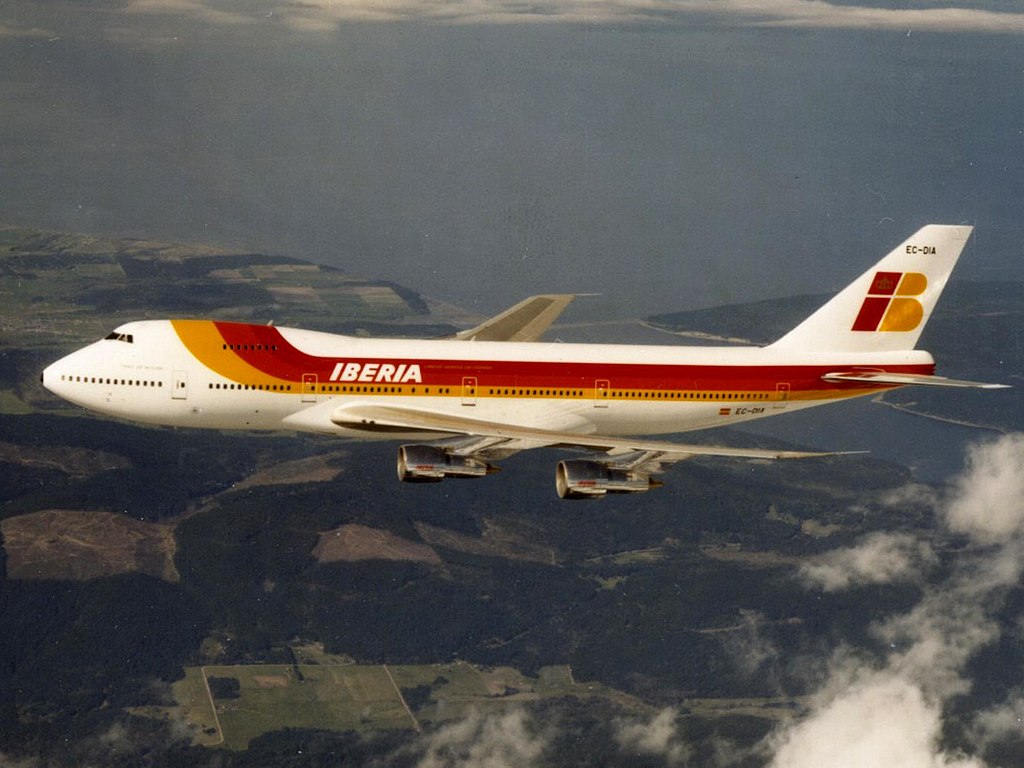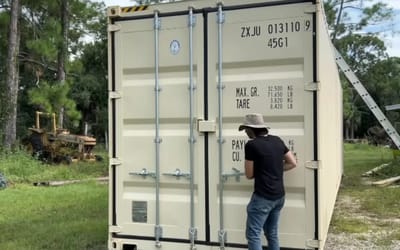Everything you need to know about the infamous Boeing Doomsday
Published on Oct 10, 2023 at 6:19 PM (UTC+4)
by Amelia Jean Hershman-Jones
Last updated on Oct 11, 2023 at 10:24 AM (UTC+4)
Edited by
Kate Bain
This is the (ominously named) US Boeing Doomsday plane.
Also known as the Nightwatch, the aircraft is a militarized version of the Boeing 747-200, designed as a highly specialized airborne command center for the United States government.
READ MORE: Max Verstappen owns one of the most badass private jets in Formula 1
Doomsday is built to help the government continue operating in the wake of a major crises, such as a nuclear war, natural disaster or terrorist attack.
In case of emergency, the Boeing Doomsday plane would whisk the US President, Secretary of Defense and the Joint Chiefs of Staff to safety.
The US Air Force says this is a “highly survivable command, control and communications center to direct U.S. forces” and it would help “POTUS (US President) execute emergency war orders and coordinate actions by civil authorities”.
Built by Boeing Aerospace Co, it features four general electric CF6-50E2 turbofan engines with 52,500 pounds of thrust each and swept-wings.
It’s long-range, high-altitude and capable of refueling in flight after 12 hours.
Modifications from the Boeing 747-200 include advanced communication systems, hardened electronic equipment, and security.

Background checks, security clearances, and rigorous screening procedures ensure only authorized personnel can board.
Meanwhile, advanced defense measure include electronic countermeasures, infrared missile warning systems, and chaff dispensers.
At 231 feet, 4 inches (70.5 meters) long and with a wingspan of 195 feet, 8 inches (59.7 meters), it is absolutely massive, too.
It has a maximum takeoff weight of 800,000 pounds (360,000 kilograms).
Inside it boasts a command-work area, conference room, briefing room, operations team work area, communications area and rest area.
It seats up to 112 people.

Perhaps most crucially, its advanced satellite communications system provides worldwide communication for leaders.
This communication is designed to work even in the event of electronic warfare or cyberattacks but is highly secure and encrypted.
The Boeing Doomsday even has low-frequency antenna that trail up to five miles (8km) behind the aircraft in flight.
In addition, upper high-frequency and “Milstar” communications equipment sit on top of the fuselage within its distinctive bulge.

It even ensures effective coordination between leadership onboard the aircraft and military forces on the ground, which allows the plane to function as an airborne nuclear war command and control centre.
The Boeing Doomsday is also protected against the effects of electromagnetic pulse, and it has nuclear and thermal effects shielding in the case of a nuclear attack.
What’s more, it provides supports the Federal Emergency Management Agency.
The agency provides communications and a command centre for relief efforts following natural disasters including hurricanes and earthquakes.
At least one of the E-4B NAOC Boeing Doomsday aircrafts is always on 24-hour alert, 7-days a week, with a global watch team at a range of global bases.
Each Boeing Doomsday plane is worth an estimate $223.2 million each.
The Air Force announced last year that the US Air Force plans to spend at least $3.4 billion to research a new Doomsday plane.
DISCOVER SBX CARS: The global premium car auction platform powered by Supercar Blondie
All Supercar Blondie contributors undergo editorial review and fact-checking to ensure accuracy and authority in automotive journalism. After gaining her BA Hons in French and English at the University of Nottingham, Amelia embarked on a vocational diploma from the National Council for the Training of Journalists (NCTJ). This led to numerous opportunities, from interning at Vogue to being on the small team that launched Women’s Health magazine in the UK, which was named the PPA Consumer magazine of the year for three years running. As Health, Beauty and Fitness editor, Amelia personally received a Johnson & Johnson Award and was shortlisted for both PPA and BSME titles. Since then, Amelia has created content for numerous titles and brands, including the Telegraph, 111 Skin, Waitrose, Red magazine, Stylist, and Elle, as well as being Head of Content at Vitality and Editor in Chief at INLondon magazine. “My superpower is translating technical jargon about the mechanical workings of a supercar into a relatable story you’ll want to share with your friends after you’ve read it.” After joining the SB Media family as a senior journalist in September of 2023, Amelia’s role has evolved to see her heading up the SEO output of the editorial team. From researching the most ‘Google-able’ key terms to producing evergreen content - it’s been a time of hard work, growth, and success for the editorial team and the Supercar Blondie website. “I like to think of myself as a ‘method journalist’. In other words: I live and breathe whatever I am writing about. When writing about fitness, I trained as a personal trainer, and as a beauty editor, I completed an ‘expert’ in scent diploma with the Fragrance Foundation. “During my tenure at Supercar Blondie, however, I did something I never thought possible: I passed my driving test at the age of 36. One day I’d love to train as a mechanic to better understand what happens under the hood, too. “My sweet spot is providing readers with a ‘takeaway’ (read: something new they didn’t know before) after reading every one of my stories. While I don’t claim to be an expert in the automotive world, I know the experts and bodies in the field to rely on to provide our readers with an informative and thought-provoking story every time they visit the site.”





